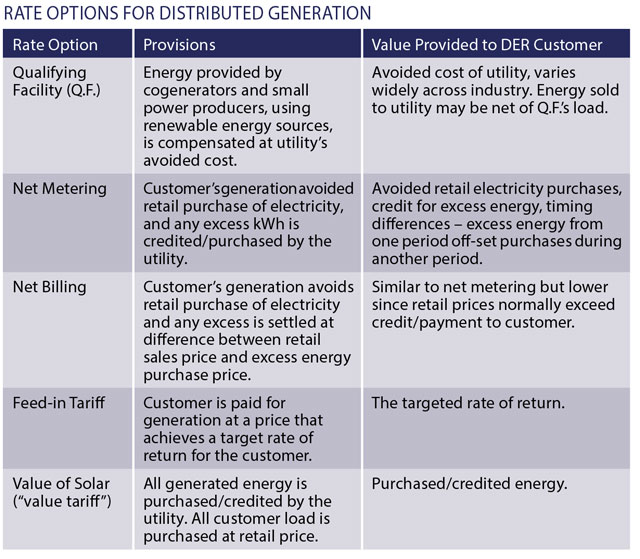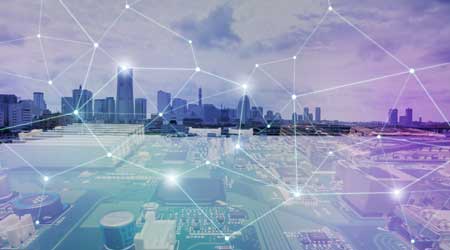Smart Grid: How to Integrate Buildings for Maximum Benefit
Is your building a grid-interactive efficient building (GEB)? Here are some tips and advice on how best to integrate your building with the ever-evolving smart grid.
The modern electric grid is going through a paradigm shift towards the smart grid to deliver electricity more reliably, efficiently, and intelligently. Based on the U.S. National Institute of Standards and Technology's (NIST) definition, the smart grid is "a modernized grid that enables bidirectional flows of energy and uses two-way communication and control capabilities that will lead to an array of new functionalities and applications." The two-way communication and control capabilities include interactions between facilities and the electric grid.
About 75 percent of electricity generation is used in buildings. Traditionally, energy and communication flow are one-direction flows from the grid to facilities. What facility managers need to know is that buildings can provide grid services too. Such grid services include efficiency, load shedding, load shifting, load modulation, and behind-the-meter generation. A building that can provide these grid services automatically is now called a grid-interactive efficient building (GEB). GEBs can use two-way communication to interact with the smart grid and provide reduced power demand or even reversed energy flow during the electric grid peak periods.
ASHRAE's recently published "Smart Grid Application Guide: Integrating Facilities with the Electric Grid" is a first attempt to work with utilities and other smart grid players to shape the future of the smart grid and smart buildings. Target audiences of this guide are building owners, designers, and facility managers. The guide is focused on how facilities can be designed and operated to interact with the smart grid to reduce utility costs and bring in additional revenue streams. A committee that included representatives from NIST, the Smart Electric Power Alliance (SEPA), the OpenADR Alliance, DOE national labs, and a utility oversaw the writing of this guide. What follows are some of the considerations when facility managers are preparing their facility to integrate with the smart grid.
Utility bill savings
Many electric utilities offer programs that allow customers to be involved in helping utilities achieve cost reductions or achieve strategic goals. Often these programs are intended to encourage customers to make changes in end-use equipment or the ways and times they use electricity to achieve an avoided cost-benefit (reduction in cost to generate and transmit electricity) for the utility.
In turn, for customer participation, the utility typically provides a form of incentive. These demand response-based programs can represent one means by which smart grid elements installed in commercial and institutional facilities can generate utility bill savings (reduced demand charges) for the customer. Other programs are designed to ensure distributed resources, such as rooftop solar generation, are connected safely to the distribution grid and that customers are compensated for excess energy fed back onto the grid. Rate options for distributed generation, for example, are presented in the following table. Facility managers should reach out to their electricity provider and determine which programs might generate sources of value from free services, rebates for equipment upgrades, or even direct compensation for participating in the program.

Facilities and smart grid programs
The smart grid is just emerging and still evolving rapidly every day. Rules and regulations heavily influence the ability of a building or campus to participate in the smart grid. These may include electric utility tariffs, state regulations, wholesale market regulations, and federal regulations. Facility managers need to know the federal, state, and local rules and regulations related to the smart grid, and contact local utilities for available smart grid programs.
In some markets like California, demand response is mandated in the building codes. The state has created various smart-grid-related regulations that govern how buildings are designed and operated. This increases the likelihood that facility managers will use these solutions, but it is important to stay up to date with the latest regulations and rulings constantly.
In Texas, the supply and demand for electricity use a free-market approach, and the sale of electricity has largely been deregulated. Customers may have many or few service providers' choices to use smart grid technologies depending on their locations.
Hawaii has the highest retail electricity prices and has been adopting solar photovoltaics at a rapid pace. The high percentage of grid-connected photovoltaics may cause stability problems for the grid in Hawaii, because changes in weather conditions will cause the fluctuation of power supplied by photovoltaics. Facility managers can help mitigate the imbalance between grid power supply and demand by using smart grid technologies to control their building loads — to increase or decrease load, or shift load — to match the power supply fluctuation.
Related Topics:















